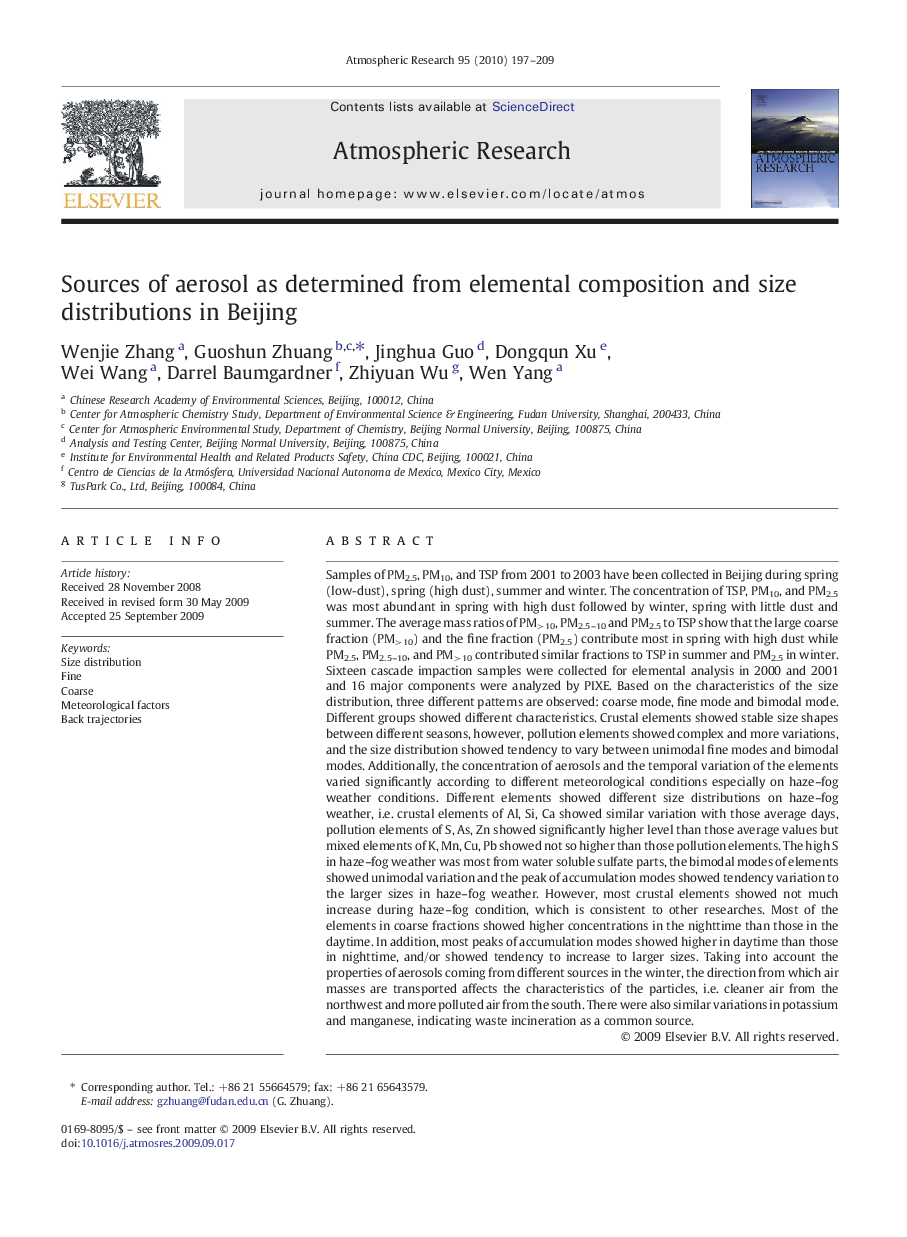| کد مقاله | کد نشریه | سال انتشار | مقاله انگلیسی | نسخه تمام متن |
|---|---|---|---|---|
| 4450652 | 1620568 | 2010 | 13 صفحه PDF | دانلود رایگان |

Samples of PM2.5, PM10, and TSP from 2001 to 2003 have been collected in Beijing during spring (low-dust), spring (high dust), summer and winter. The concentration of TSP, PM10, and PM2.5 was most abundant in spring with high dust followed by winter, spring with little dust and summer. The average mass ratios of PM> 10, PM2.5–10 and PM2.5 to TSP show that the large coarse fraction (PM> 10) and the fine fraction (PM2.5) contribute most in spring with high dust while PM2.5, PM2.5–10, and PM> 10 contributed similar fractions to TSP in summer and PM2.5 in winter.Sixteen cascade impaction samples were collected for elemental analysis in 2000 and 2001 and 16 major components were analyzed by PIXE. Based on the characteristics of the size distribution, three different patterns are observed: coarse mode, fine mode and bimodal mode. Different groups showed different characteristics. Crustal elements showed stable size shapes between different seasons, however, pollution elements showed complex and more variations, and the size distribution showed tendency to vary between unimodal fine modes and bimodal modes. Additionally, the concentration of aerosols and the temporal variation of the elements varied significantly according to different meteorological conditions especially on haze–fog weather conditions. Different elements showed different size distributions on haze–fog weather, i.e. crustal elements of Al, Si, Ca showed similar variation with those average days, pollution elements of S, As, Zn showed significantly higher level than those average values but mixed elements of K, Mn, Cu, Pb showed not so higher than those pollution elements. The high S in haze–fog weather was most from water soluble sulfate parts, the bimodal modes of elements showed unimodal variation and the peak of accumulation modes showed tendency variation to the larger sizes in haze–fog weather. However, most crustal elements showed not much increase during haze–fog condition, which is consistent to other researches. Most of the elements in coarse fractions showed higher concentrations in the nighttime than those in the daytime. In addition, most peaks of accumulation modes showed higher in daytime than those in nighttime, and/or showed tendency to increase to larger sizes. Taking into account the properties of aerosols coming from different sources in the winter, the direction from which air masses are transported affects the characteristics of the particles, i.e. cleaner air from the northwest and more polluted air from the south. There were also similar variations in potassium and manganese, indicating waste incineration as a common source.
Journal: Atmospheric Research - Volume 95, Issues 2–3, February 2010, Pages 197–209